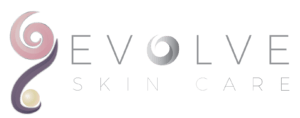Nationwide television commercials and magazine ads abound with over-the-counter (OTC) products. Although largely untested in controlled clinical trials, many of these products are considered somewhat effective, particularly for patients with mild acne. Those which have been tested include salicylic acid-containing topical products and many benzoyl peroxide (BP) products described in further detail later. Salicylic acid has revealed some efficacy in acne trials, although when tested head-to-head with other topicals, particularly BP, it is generally less effective.22,23 Nonprescription, nonbenzoyl-peroxide-containing products appear to be somewhat effective for the treatment of acne, especially mild acne, though there is limited published evidence supporting their efficacy in the treatment of acne.
Sulfur, sodium sulfacetamide, and resorcinol are active ingredients in several OTC dermatology niche products. Sulfur exhibits mild antibacterial and keratolytic properties.24 Because of sulfur’s distinctive odor, it is often combined with sodium sulfacetamide to mask the scent.25 It is often used in adult female acne because of its favorable tolerability.26,27 Resorcinol also has mild antimicrobial properties and is typically formulated in a 2% concentration in combination with 5% sulfur.
One common acne myth is that poor hygiene and improper cleansing cause acne.21,28 The role of facial cleansing in acne is to remove makeup, dirt, and excess oil.29 Use of the wrong, too harsh cleanser can disrupt skin barrier, increase transepidermal water loss, encourage bacterial colonization, promote comedones, and cause symptoms of burning and stinging.30,31 Typically, twice-daily washing with a gentle soap-free, pH-balanced cleanser is recommended. Antibacterial washes, other than BP, have not been shown to be useful in the treatment of acne.
Facial toners can decrease oiliness and remove makeup and traces of dirt. They are a common component of several prepackaged combination acne treatment regimens. Patients should be cautious not to overuse facial toners because they can be irritating. If irritation occurs, this will adversely affect the tolerability of acne medications.
Another common acne myth is that use of cosmetics worsens acne. On the contrary, use of concealing oil-free, noncomedogenic makeup can improve patient quality of life and does not worsen the severity of acne.32,33 Use of cosmetics in patients with acne has not been shown to delay treatment response either.
BP has been shown to be the most widely studied of OTC products and has shown to be one of the most versatile, safe, inexpensive, and effective acne therapies.34,35 Its lipophilic nature permits it to penetrate the stratum corneum and enter the pilosebaceous unit where P acnes resides. It acts via the generation of free radicals that oxidize proteins in the P acnes cell wall. It also has been shown to have mild comedolytic36 and antiinflammatory properties.37,38 BP helps limit the development of P acnes resistance to antibiotics and also provides increased efficacy in combination with retinoids.39,40 So far, antibiotic resistance to BP has not been reported.41-44
Although issues regarding genotoxicity have been raised in the past, BP has now been labeled as “GRASE” (generally regarded as safe and effective) by the FDA, and all topical monotherapy products have been made available OTC since 2011. Labeling includes advice to avoid the eyes, lips, and mouth. The product can cause bleaching of hair and clothing, and risk of increased sunburn and the need for photoprotection also are mentioned. BP frequently causes dryness, erythema, and peeling upon initiation of treatment. Starting with lower concentrations (eg, 2.5%) and utilizing more emollient vehicles if needed can help alleviate these discomforts. Allergic contact dermatitis to BP occurs in 1 in 500 people and should be considered if a patient complains of itching and swelling of the eyes.
BP is available in a variety of formulations and in concentrations ranging from 2.5% to 10%. There is some evidence that higher concentrations do not increase efficacy but are more irritating. However, the back may be a “special site” circumstance, where increasing concentration or prolonged contact leads to increased efficacy.45 Formulations include a variety of topical leave-on preparations as well as washes that permit patients to remove BP from the skin, reducing the possibility of bleaching of clothing, bedding, or towels.38 It has been suggested that short-contact BP therapies do not significantly reduce bacterial load, but data are lacking. However, they can be effective if left on the skin for the duration recommended by the manufacturer.
Consensus Recommendations:
BP is generally regarded as a safe and effective medication that may be used as monotherapy or in topical combination products for mild acne or in regimens of care for acne of all types and severities. (SOR: A).
BP may minimize development of antibiotic-resistant P acnes when used with topical or systemic antibiotics. (SOR: C).
Follow Us On
Categories
